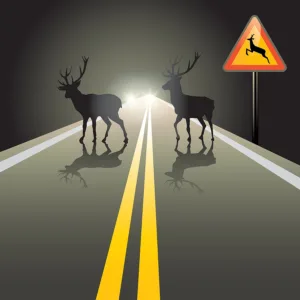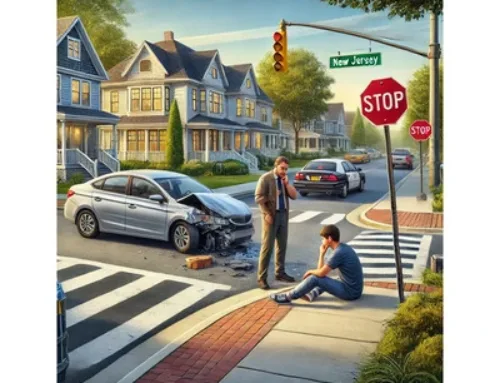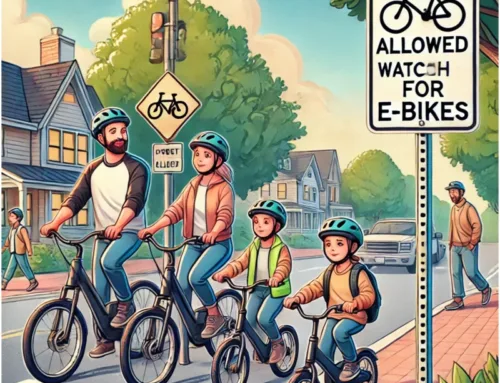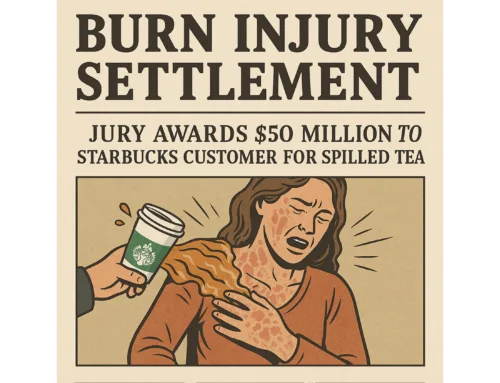There are two things that every experienced driver knows about automotive accidents: First, they can happen in the most unexpected and unusual circumstances, and second, there are predictable factors that make the risk of an accident greater. The only protection a motorist has against unexpected dangers is to stay alert and drive carefully, but it’s possible to take more proactive steps against the more foreseeable hazards. Toward that end, the Centers for Disease Control (CDC) studied fatal crash statistical data collected by the National Highway Traffic Safety Administration (NHTSA) and discovered some important trends. Specifically, they were able to isolate the time of day that saw the most automotive fatalities for each state.
 While the specific factors that cause a particular hour of the day to see more frequent accidents are beyond the scope of this study, it’s not hard to consider at least some of the factors involved: heavier traffic during rush hour, lower visibility and the glare of headlights at night, lower nighttime temperatures compounding the danger presented by adverse weather conditions such as rain or snow, and the natural behavior of animals at certain times of day and year. As many New Jersey drivers are all too aware, deer are crepuscular animals – meaning that they are most active around dawn and dusk, when the deer can still see well enough to forage but they are less visible to predators. Unfortunately, they are likewise less visible to motorists, and can cause serious accidents when a driver either strikes, or swerves to avoid, a deer in the road. Similarly, the behavior of other humans at certain times of day can also make the roads more dangerous at particular hours; it’s more likely to encounter a drunk or drowsy driver later in the evening in most places.
While the specific factors that cause a particular hour of the day to see more frequent accidents are beyond the scope of this study, it’s not hard to consider at least some of the factors involved: heavier traffic during rush hour, lower visibility and the glare of headlights at night, lower nighttime temperatures compounding the danger presented by adverse weather conditions such as rain or snow, and the natural behavior of animals at certain times of day and year. As many New Jersey drivers are all too aware, deer are crepuscular animals – meaning that they are most active around dawn and dusk, when the deer can still see well enough to forage but they are less visible to predators. Unfortunately, they are likewise less visible to motorists, and can cause serious accidents when a driver either strikes, or swerves to avoid, a deer in the road. Similarly, the behavior of other humans at certain times of day can also make the roads more dangerous at particular hours; it’s more likely to encounter a drunk or drowsy driver later in the evening in most places.
For the state of New Jersey, the time of day at which road fatalities peaked was the hour between 8 and 9 PM. This was later than the most dangerous hour in many states, though the same block of time was also most dangerous for drivers in Nevada, Florida, and Ohio, among others, with eight states in total seeing the most road deaths during this time span. Fatalities in seven states, including California, Texas, and Michigan, peaked an hour later, in the 9 to 10 PM block, while all other states had their peak in fatalities earlier in the day. In general, it seems that the less densely populated, more rural states had their peak in fatal crashes earlier in the day (between 1 and 2 PM for South Dakota and Kansas), and more urbanized or densely populated states became more dangerous for driving later in the evening.
This study also considered which day of the week and month of the year saw the most fatal accidents. These figures were not broken down by state, so it seems reasonable to infer that the trends persist to some degree nationwide. Despite the stresses of rush hour and the workday commute, NHTSA data revealed that Saturdays were the most dangerous day of the week in terms of automotive deaths, with an average of 4.68 fatalities an hour, peaking at more than 7 fatal accidents between 9 and 10 PM across the country every Saturday.
The most dangerous month of the year for auto accidents may also come as something of a surprise. You might have reasonably guessed that one of the summer months, when people often travel on vacation involving long drives through unfamiliar areas, was the most dangerous – and you wouldn’t be far off the mark, as June, July, and August are all close runners-up for most road fatalities. However, it turns out that September, with the festivities of Labor Day weekend and a new crop of inexperienced drivers hitting the roads with the new school year, actually sees the most fatal crashes, with 106.48 fatalities on average every day of the month. October also comes close, joining September and the summer months in averaging more than 100 fatalities per day.
Knowing when accidents are most likely to occur is great, but how can a motorist use this information to keep themselves and their families safer? When possible, plan to avoid being on the road as much as possible during the peak danger hour; a New Jersey driver might try to make sure they’re back from the grocery store, or already at their destination for an evening out, by 8 PM. Of course, life happens and it’s not always feasible to avoid the roads at 8 o’clock, or on Saturdays, or during September. In those cases, the best course of action is to try to be aware of the factors that make that period of time unusually hazardous, plan your route accordingly to minimize the impact of those dangers, and remain alert.
Contact MyNJInjuryLawyer Howard P. Lesnik
If you or a loved one suffered an injury in an accident in NJ, you should contact an attorney familiar with handling these claims. An experienced NJ Injury Lawyer will know how to obtain medical records, videos, photographs, experts, locate witnesses and contact the insurance company so you can make a claim for your injuries.
My NJ Injury Lawyer Howard P. Lesnik, Esq. offers complimentary strategy sessions to address any issue or questions you may have for your injury claim in NJ.
Please contact NJ Injury Lawyer Howard Lesnik, Esq., immediately if you were involved in an accident. I personally handle NJ personal injury cases on a regular basis. Please contact me now by email, by phoning 908.264.7701, or by completing the form to the right to schedule your complimentary 30-minute strategy session. Call me direct and I will answer 5 questions that you have about your potential claim.







